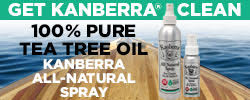LNM: AIWW MM:1,077.4, Dumfoundling Bay Daybeacon 54 Missing

1. DUMFOUNDLING BAY DAYBEACON 54 (LLNR 47725) IS MISSING. UNIT SET 5NFR “54” IN POSITION 25-56-19.866N, 080-07-52.997W AP TO MPP 074T AT 1.9YDS. USING 01 135LB DORMOR AND 30FT OF 1/2″ CHAIN. LW.
2. ALL MARINERS ARE REQUESTED TO TRANSIT AREA WITH CAUTION.
CANCEL AT//242100Z DEC 25// BT
| This email was sent to curtis.hoff@CruisersNet.net using GovDelivery Communications Cloud on behalf of: U.S. Coast Guard · U.S. Department of Homeland Security · Washington, DC 20528 · 800-439-1420 |  |
|

*** THIS DIV IS AUTOMATICALLY HIDDEN WHEN DISPLAYED – INFO FOR DEBUGGING PURPOSES ***
***MANUALLY DO: FIX TITLE, EXPIRE DATE, CATEGORIES, ENABLE SOCIAL POST ***0: llnr: 47725 District: 07 lat/lon: 25.938848,-80.131405 Desc: Dumfoundling Bay Daybeacon 54
WW: blat (25.93885) , blon (-80.13144) , bWWid (5) , bMM (1,077.4) , bDOffWW (0.0) , bAbbrev (AIWW) , bWWName (Atlantic Intracoastal Waterway.gpx)










Be the first to comment!